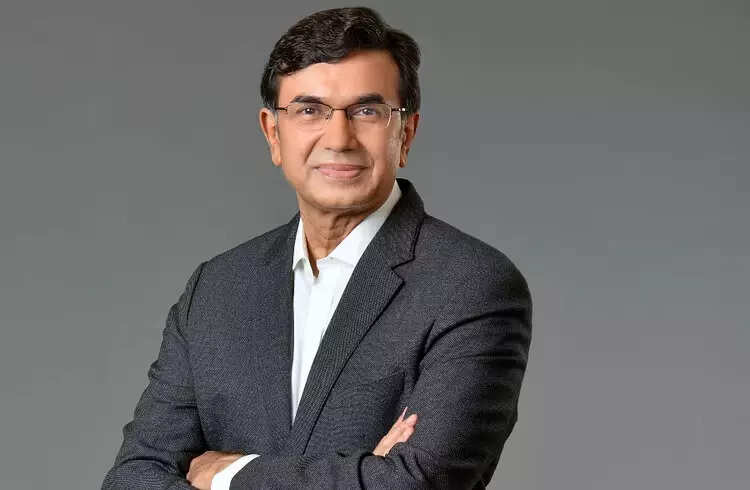
New Delhi: Mahindra & Mahindra (M&M) has flagged rising commodity costs, particularly steel, which it says has seen a 6 per cent price increase over the last quarter.
“We are concerned about steel going up,” said Rajesh Jejurikar, Executive Director & CEO- Auto and Farm Sector, during the company’s Q1 earnings media briefing on Wednesday.
While it claims to have managed to partially offset the impact through hedging and inventory buffers in Q1, Jejurikar cautioned that continued inflation in raw material costs could strain price stability.
“Looking at the overall inflation levels in the category, there should be an effort made to moderate the level that is getting kicked off with raw material increases such as steel,” he said.
Amarjyoti Barua, Group Chief Financial Officer (CFO) noted that while commodity hedges helped offset inflationary pressures in Q1, sustained increases, particularly in steel, could impact future quarters.
“Steel was the largest,” he said, adding that certain precious metals are also showing signs of inflation, possibly driven by pre-buying trends in the U.S.
“The inflationary environment right now is a little more than what we were counting on till last quarter,” Barua cautioned.
During Q1, Mahindra had already implemented a price increase of up to 3 per cent across its SUV and commercial vehicle (CV) portfolio, citing rising input and commodity costs as the key drivers. The company said the hike was necessary to offset inflationary pressures impacting the broader automotive sector.
CAFE norms
Amid industry debate over proposed fuel efficiency regulations, SIAM has submitted its recommendations for the Corporate Average Fuel Efficiency (CAFE) norms.
Mahindra and Tata Motors are among the OEMs that have reportedly sought the exclusion of light commercial vehicles (LCVs) under 3.5 tonnes from the fuel efficiency mandate. However, in a draft notification issued Monday night, the Bureau of Energy Efficiency (BEE) retained LCVs in its proposal, covering N1, N2, and N3 truck categories, despite industry pushback.
Commenting on the same, Jejurikar said, “We strongly support and endorse this proposal and believe there is broad alignment among SIAM members. While we await the government’s final decision, we are fully prepared to comply with the approved norms.”
In Q1 FY26, Mahindra emerged as the market leader in the LCV segment with a commanding 54.2 per cent market share, overtaking Tata Motors’ long-held dominance in the category.
EV Business
Electric SUVs contributed 8 per cent to Mahindra’s total SUV volumes in Q1 FY26, with the company leading the EV market in both revenue and volume share.
The auto major said there has been “no disruption in production” due to rare earth magnet supply issues. It added that supply for key components is comfortably secured for the current and next quarters, and largely covered for Q4 as well.
“We’ve taken multiple actions, ranging from inventory planning to substituting rare earth with light earth elements and exploring ferrite-based alternatives. At this time, we feel confident that it is not a risk,” Jejuriker said.
The automaker plans to ramp up its XUV 9e and BE 6 production by introducing variants Pack 1 and Pack 2 through the festive season and into January. Interestingly, EVs have the highest proportion of women buyers across Mahindra’s portfolio.
“While I don’t recall the exact number, I believe around 80 per cent of our EV buyers are women, which is a distinctly different profile compared to our ICE vehicles,” he said.
On rising competition, he acknowledged the shift in market share dynamics. “As competition grows, market share will be affected.”
The company’s EV business clocked ₹111 crore in EBITDA on ₹2,800 crore revenue, including contributions from Mahindra Ltd and Mahindra Electric Automobile Ltd (MEAL).
Q1 Performance
Backed by robust operational performance in its farm and automotive businesses, M&M reported a 24 per cent year-on-year rise in consolidated net profit to ₹4,083 crore for the quarter ended June. The company’s subsidiaries also contributed meaningfully to the quarterly growth.
“This was a strong quarter for cash generation. Despite infusing nearly ₹2,500 crore into two subsidiaries through rights issues, our cash balance increased on a sequential basis,” said Anish Shah, Group CEO and Managing Director.
He added that the company’s automotive launch pipeline remains strong, with multiple new models and variants scheduled across FY26 and FY27.
